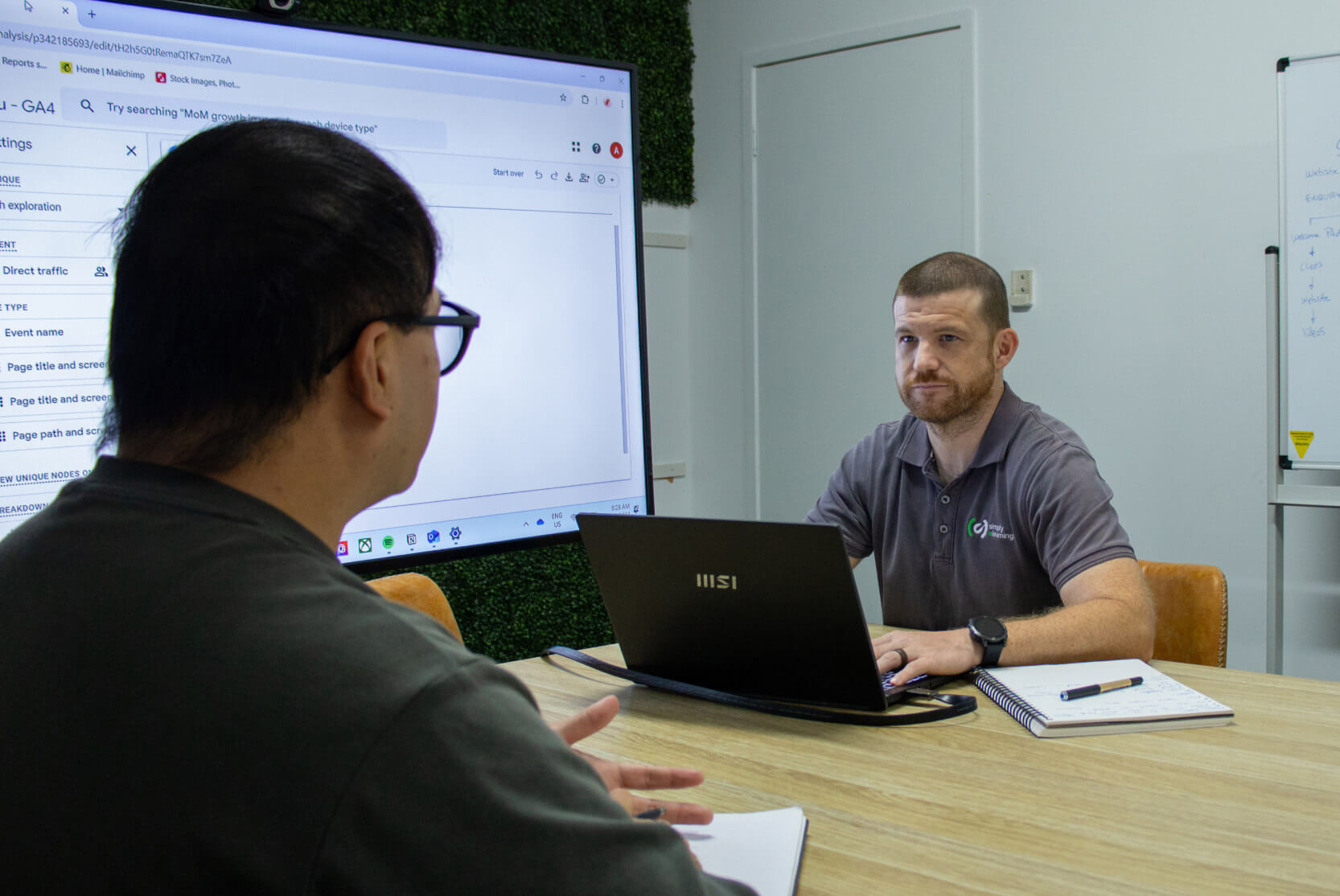Behind every successful training course is a thoughtful, strategic mind—an instructional designer. These professionals combine creativity, psychology, and learning science to turn complex information into engaging and accessible learning experiences. Whether you’re rolling out compliance training, onboarding new staff, or upskilling teams in new technologies, instructional designers are the ones making sure it all clicks. In short, they’re the bridge between expertise and effective learning. Moreover, they ensure that learning outcomes align with real-world application.
At Simply eLearning, we know great training doesn’t happen by accident. It takes careful planning, collaboration, and an understanding of how people learn. That’s why our instructional designers don’t just ‘build’ training—they design experiences that solve problems, inspire confidence, and actually get used. Every module, video, or interaction has a clear purpose and leads learners toward real outcomes—not just ticking a box. Ultimately, the difference shows in both learner engagement and business performance. Above all, it shows in results that last.
Key Features of a Skilled Instructional Designer
Instructional designers wear many hats. They’re part educator, part storyteller, and part strategist. Their strength lies in understanding how people absorb and retain information, and using that insight to structure content in a way that’s both effective and enjoyable. From analysing audience needs to mapping out learning objectives, they ensure every piece of content serves a purpose and supports performance on the job. In addition, they tailor the tone and language to the learner’s environment, making it feel relevant and real.
Working closely with subject matter experts, project managers, and multimedia teams enables instructional designers to bridge the gap between technical knowledge and learner-friendly experiences. In fact, whether they’re scripting a safety scenario, designing interactive assessments, or planning the layout of an entire course, they focus on clarity, flow, and relevance. They make the complex feel simple and the learning journey feel natural. Furthermore, their attention to detail ensures that every step of the process is aligned with the ultimate learning goals.
Some standout qualities of great instructional designers include:
A learner-first mindset
Strong writing and communication skills
Solid understanding of learning theories and models
Ability to simplify complex information
Collaboration across multiple roles and tools
5 Ways Instructional Designers Enhance Training

1. Aligning Training to Real Business Needs
An effective instructional designer starts with the end in mind. They ask: what does the learner need to do after this course? What impact should it have on the business? By asking these questions up front, they ensure training isn’t just a box-ticking exercise. Instead, it becomes a strategic tool aligned with your organisation’s goals—whether that’s improving safety, increasing retention, or supporting change initiatives.
2. Making Learning Engaging and Relevant
Boring training is usually the result of poor design. Great instructional designers know how to hold attention by using storytelling, real-life scenarios, and interactive activities to bring dry topics to life. Consequently, learners understand the ‘why’ behind what they’re learning. It feels useful, not forced, which in turn boosts motivation and engagement throughout the course.


3. Structuring for Clarity and Flow
Good instructional designers think like learners. They break content into manageable chunks and use techniques like signposting, repetition, and timely feedback to help ideas stick. Furthermore, they understand the pacing of information—knowing when to introduce, test, and reflect on key concepts. This structure builds learner confidence and reduces cognitive overload.
4. Building for Scalability and Flexibility
A well-designed course can be updated, reused, and adapted for different teams. That’s the power of solid instructional design. Whether it’s developing modular content or designing with mobile in mind, instructional designers ensure your training works for today’s needs—and can evolve for tomorrow’s. In other words, they future-proof your training. They also consider accessibility, visual design, and language to make sure everyone has an equal opportunity to learn.


5. Partnering with Your Team
Instructional designers don’t work in a vacuum. They collaborate with subject matter experts, managers, and stakeholders to understand the full picture. This means your training reflects your company’s culture, tone, and expectations. They know how to ask the right questions—and translate technical or abstract concepts into clear, learner-friendly experiences.
Data-Driven Design
In addition, instructional design doesn’t end once the course is launched. One of the biggest advantages of working with skilled instructional designers is their ability to evaluate impact. They gather feedback, look at learner performance data, and identify areas for improvement. This iterative approach means training evolves based on real-world results, making it more effective over time. Furthermore, it helps spot where learners are struggling, allowing targeted updates instead of complete rewrites.
Moreover, the feedback loops and performance analytics provide valuable insights into what’s working and what needs adjustment. As a result, training not only meets immediate goals but can be improved continuously. Therefore, this data-driven mindset leads to smarter decision-making and ensures that the training works harder for your business.
Supporting Change and Performance
More than just informing, training should influence behaviour. Instructional designers understand how to drive performance by designing for the long-term, not just a one-time event. They use proven methods—like spaced repetition, job aids, and practice activities—to help learners apply their knowledge in real scenarios. It’s about building confidence and capability, not just passing a quiz. Moreover, they consider how learners will transfer skills to their everyday work, ensuring lasting impact.
Learner needs are central. Because of that, instructional designers consider how people feel during training. They craft experiences that are flexible and supportive, making learning feel achievable. As a result, this kind of thoughtful design leads to better adoption, higher completion rates, and more meaningful outcomes for learners and businesses alike. Thus, this focus on performance ensures that training isn’t just an event—it’s a journey toward sustained improvement.
Designed for Every Learner
No two learners are the same—and a one-size-fits-all course won’t cut it. A good instructional designer considers the diversity of the audience, including their background, role, tech access, and experience level. Whether your team is on the floor, in the field, or behind a desk, they design content that’s accessible, inclusive, and aligned to how and where your people learn best. Furthermore, they understand the nuances of different learning styles and use that knowledge to create courses that resonate with each individual.
Formats matter. For example, depending on the topic, some content is best delivered as short, interactive modules. Others need scenario-based simulations, short videos, or downloadable PDFs. Instructional designers tailor each experience to suit the platform, the message, and the learner. Therefore, they ensure that training is not only engaging but also accessible to every learner, regardless of their environment. In turn, this level of precision leads to training that gets noticed—and remembered.

Simply eLearning: Your Instructional Design Partner
At Simply eLearning, our instructional designers go beyond the basics. We ask the right questions, explore what really matters to your team, and build experiences that are clear, supportive, and easy to roll out at scale. Whether you need an onboarding course, safety refresher, or leadership development program, we help you get the most from your training investment. In conclusion, we see instructional design as the backbone of every strong course. We bring a balance of creativity and learning science to every project, no matter the industry.
From start to finish, our approach is collaborative. Unlike generic providers, we take time to understand your learners, goals, and challenges. As a result, our instructional designers bring your content to life in ways that connect, resonate, and deliver measurable value. And we make sure you’re involved every step of the way, so the end result feels like an extension of your team. Ultimately, we ensure that every course we create performs well and leaves a lasting impact.
Conclusion
Instructional designers are the quiet force behind impactful learning. They ask the right questions, apply proven strategies, and turn content into something that sticks. With the right instructional design, training becomes a strategic advantage—not just a task to complete.
At Simply eLearning, we bring that mindset to every course we design. We’re here to help you deliver learning that’s meaningful, measurable, and built for your business.
Key benefits of working with instructional designers:
Training that’s clear, relevant, and actionable
Courses tailored to your learners and goals
Strategic design backed by learning science
Increased engagement and knowledge retention
Scalability across teams and industries
Looking to improve your training? Let’s build it better—together.

